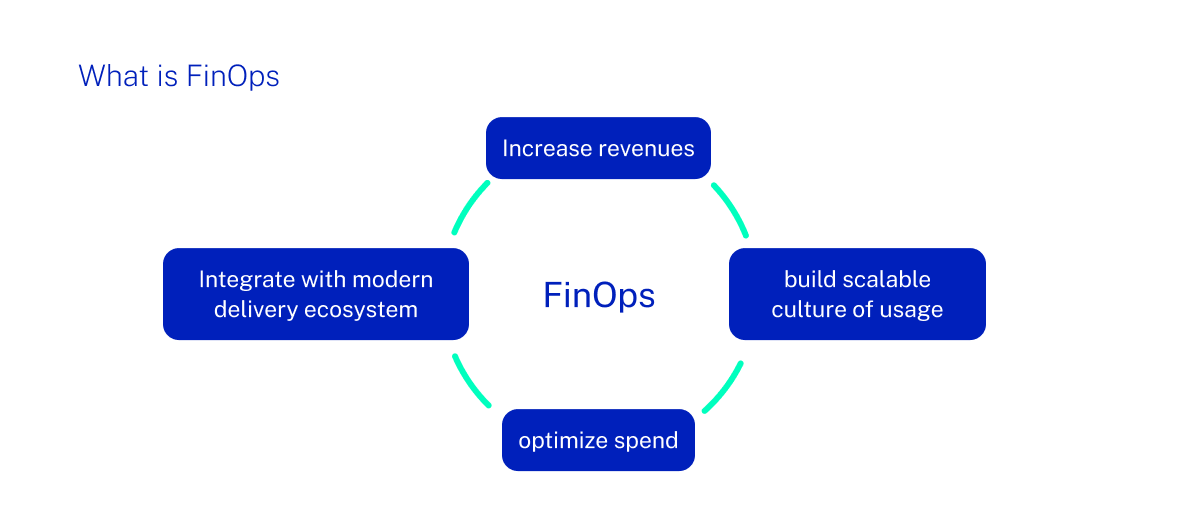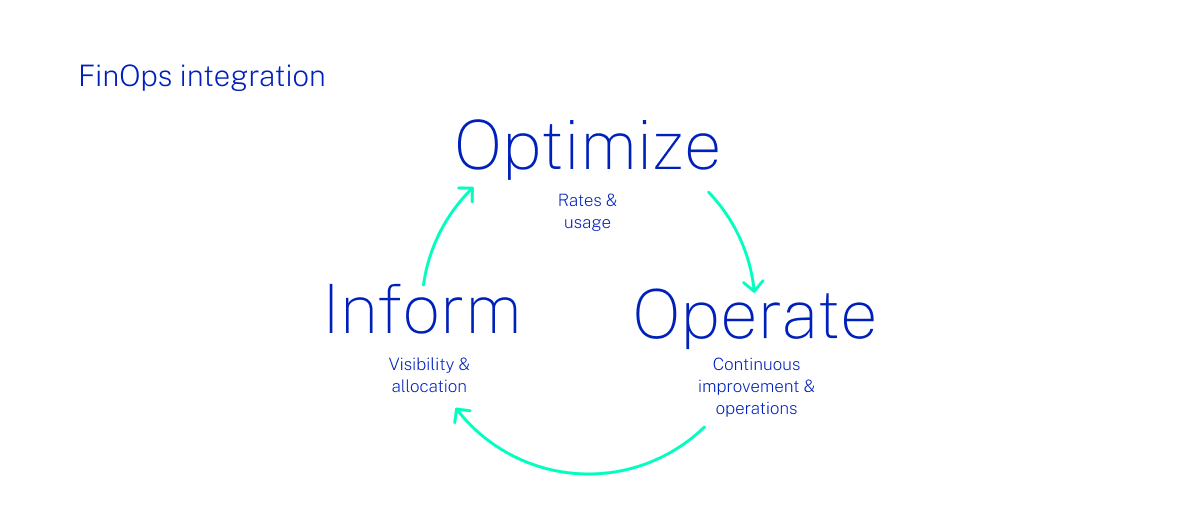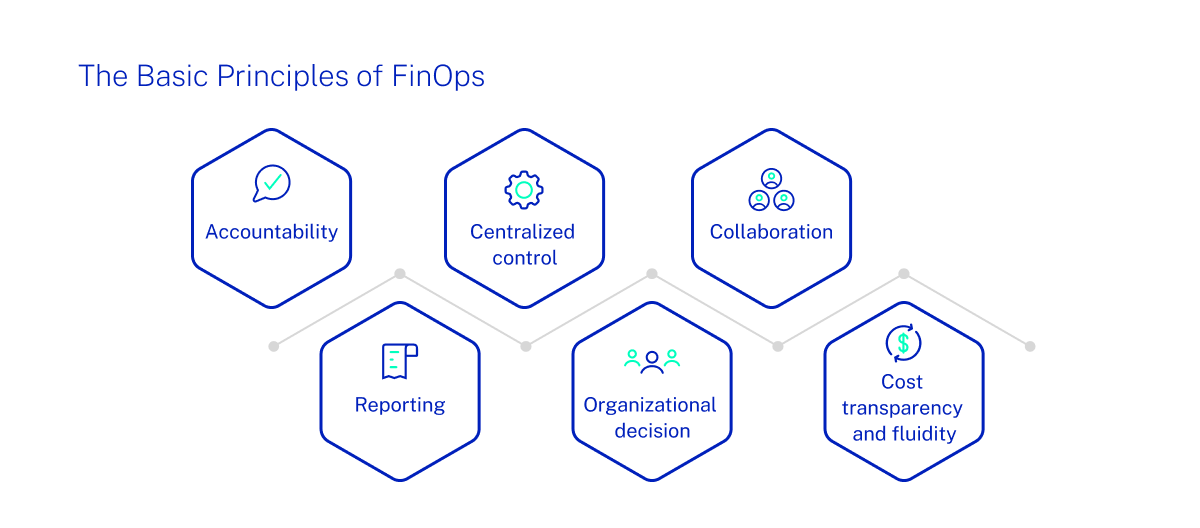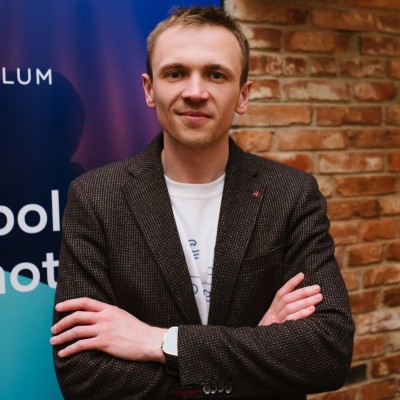Every business faces the balancing act of advancing its software and technology development as much as possible - but without breaking the bank. And that’s where FinOps comes in.
Did you know that according to Gartner, through 2024, 80% of companies will overshoot their cloud IaaS budgets due to a lack of cost optimization approaches? This underscores the critical need for FinOps—a practice that has saved businesses millions by optimizing cloud costs without hindering innovation.
FinOps in particular is especially helpful in keeping businesses on a course that is innovative, but also financially sustainable at the same time. It’s no surprise, therefore, that it’s really starting to gain traction, even among organizations that have already started their cloud migration journeys. According to McKinsey, some organizations have been able to cut their cloud costs by as much as 30% by adopting the principles of FinOps, without unnecessarily holding their progress or continuous improvement back.
- Are you consistently able to predict and explain fluctuations in your Kubernetes or other cloud services bill, avoiding unexpected increases such as 40% without clear reasons?
- Is your engineering team fully aware of the financial impact of their cloud deployments?
- Are you successfully balancing innovation with cloud cost control to avoid missing out on optimization and growth opportunities?
If your answer was 'No' to any of the questions above, then this article is specifically designed for you. Navigating the complexities of cloud costs can be challenging, but it doesn't have to be a barrier to innovation and growth for your organization. Read on to discover how adopting FinOps practices can transform your approach to cloud cost management, ensuring efficiency, scalability, and alignment with your business objectives. This is your guide to turning potential cost pitfalls into strategic advantages.
This blog answers the question ‘what is FinOps?’, and takes a closer look at how it works in detail, and how it can benefit your business in so many different ways.
What is FinOps?
FinOps is a cultural philosophy that has cloud and cost-effectiveness at its core. It combines finance and DevOps, with the aim of supporting data-driven decision making, generating maximum business value from the cloud, and better financial control across both finance and engineering teams alike.

What are the phases of FinOps integration?
The principles of FinOps are adopted through three phases, each of which ensure efficiency and cost control is maximized through the use of cost management solutions and automation technology:
Inform
First of all, it’s vital to gain full visibility of existing costs and expenditure. The 24-hour nature of cloud platforms, where usage is billed by the hour or even by the second, means there’s plenty of scope for unexpected cost creep. Only with a complete picture of who is doing what, and where costs are ramping up, can more informed decisions be made around future cost allocations, budgets and forecasts.
Optimize
With those insights to hand, the next step is ensuring that the return on cloud investment is maximized - without introducing compromises in system performance, user experience, or the pace of innovation. This can include right-sizing cloud resources to workloads; minimizing the use of idle resources once tasks have been completed; and taking advantage of any discount and offers available on cloud resources.
Operate
The ‘optimize’ phase gets a business to where it needs to be in terms of cost control - the ‘operate’ part is about keeping it there. This is where all relevant stakeholders come together to ensure that cloud objectives are still reached, within the defined cost parameters. For example, engineering and finance teams can work together to prevent the overspends that are so common in cloud-based engineering and development.

The basic principles of FinOps
So how does FinOps work in detail? There are six main principles that apply in general terms, and act as a good starting point. Along the FinOps journey, however, some of these may require more emphasis or refining, in the context of specific business requirements:
Accountability
FinOps isn’t about one person overseeing everything, and telling others what they can and can’t invest in. It’s based on the idea of shared responsibility and ownership across every single stakeholder involved. Ideally, everyone involved should assume responsibility for their own cloud use and budget, and proactively contribute to approaches that identify and cut out any wasted money or cloud resource.
Centralized control
As far as oversight is concerned, it’s good FinOps practice to build a centralized, multi-functional team that brings together various roles across engineering, finance, IT, and across the wider business. Collectively, they can make decisions around how and where FinOps is adopted, any strategic changes that need to be made to improve or maximize performance, and ensure that proper processes are being followed by all.
Collaboration
FinOps only works if everyone involved is pulling in the same direction. This is why it’s so important for all stakeholders to work closely and communicate with each other on a regular basis, and to break down any silos that may prevent that from happening. Working collectively means that the right decisions on cloud cost savings can be made, taking all areas of a business into account, and considering options from all available viewpoints.
Reporting
For that centralized control team to make the right decisions, and for individual practitioners to fully adhere to FinOps principles, they need access to timely, accurate data. And this is where accessible, digestible reports are so important. In particular, developers and engineers - who tend to be the biggest consumers of cloud - need to be able to easily understand where they’re spending, and where to exercise the most effort in keeping costs down.
Organizational decision
All of the above points contribute to contextual business decisions being made at all times. Cloud usage and costs can easily be understood and mapped out, as well as any changes within them, and this can be put in the context of wider business value. This is vital to ensuring that any decisions to scale particular cloud resources - up or down - achieves the stated aim of improving cost-efficiency without introducing any operational compromise.
Cost transparency and fluidity
The cost of cloud resources changes all the time for a variety of different reasons: new pricing plans by cloud vendors, fluctuations in business requirements, and the availability of offers and incentives. FinOps, and the decision-making processes within it, help ensure that the business can adapt to these changes with agility, and constantly optimize costs for maximum efficiency - whatever the future may hold.

The benefits of FinOps explained
When FinOps is done right, the benefits can spread far and wide throughout a business, and can be just as powerful in supporting people and processes as it can with technology and the bottom line:
Cost efficiencies
This is the most obvious benefit of adopting FinOps. But in a highly competitive climate for technology and development, the difference it can make to the bottom line can’t be understated. The amount of waste and inefficiency that FinOps can root out can be substantial; the money saved can either make for a healthier bottom line, or can be reinvested into other areas of development or innovation which would be better-served by additional support. We have successful cases of cloud cost reduction of up to 67%.
Optimizing AI investments with FinOps
Despite the rapid pace of AI innovation, FinOps.org notes that less than a third of practitioners have begun to systematically manage AI and machine learning costs. This is an indication of the significant room for improvement and the potential for FinOps to deliver substantial value in this area. By bringing AI costs under the FinOps umbrella, organizations can ensure their investments are both pioneering and financially sustainable.
Cross-collaboration
The collaborative approach of FinOps makes it much easier to bring further teams and departments into the fold over time. In particular, being able to incorporate sustainability into FinOps is key, given the amount of energy and emissions that can often be generated by cloud computing. Finops.org has found that less than 20% of FinOps teams worldwide currently collaborate with their sustainability teams, opening up opportunities to innovate with a FinOps strategy that takes both cost and the environment into account.
Organizational trust
The collaboration and reporting that FinOps promotes can work wonders in enabling more transparency and trust business-wide. Everyone will have a clear and unambiguous idea of who is spending what, and how that contributes to the overall success and productivity of the business. This also enables more informed and rational discussions to take place between teams as to how to work together in the future, without some teams feeling that others are getting preferential treatment.
Scalability and growth
The ultimate goal of any business is to make money, and cloud FinOps makes that a much easier proposition in a sector where it can be very difficult to do so consistently. FinOps means that businesses can easily scale their cloud requirements to suit their financial situation and development priorities, and can align their cloud computing to their overall long-term growth plans. In short, it means that cloud always perfectly complements the wider needs of the organization.
Conclusion
Forbes predicts that by 2025, FinOps practices will be integral to 90% of global enterprises, driven by the necessity to manage escalating cloud costs effectively.
Maximize your FinOps experience with Ciklum
Don't let cloud costs cloud your company's innovation potential. Explore FinOps with our experts at Ciklum, and discover how you can turn your cloud expenditure into a strategic advantage. At Ciklum, we have years of experience working with businesses just like yours, helping them perfect that balance of innovation and cost control. Through our holistic, end-to-end approach to development, and our expertise in experience design and artificial intelligence, we can ensure that your existing and new solutions alike deliver the biggest bang possible for your bucks.
Find out more on what we do and how we do it here, or get in touch with our team to discuss your specifics.
Blogs



































